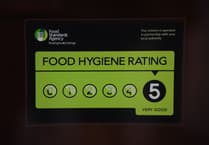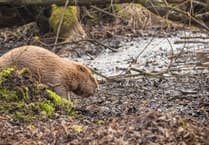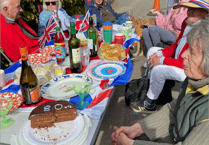DESPITE objections from planning officers, Exmoor National Park Authority has given the go-ahead for an 8,000-head free-range egg poultry farm near the Haddon Hill beauty spot.
Officers had objected on the grounds that the position, scale and materials would alter the rural landscape and affect people’s enjoyment of the National Park.
But at its meeting on Tuesday (November 1) the park authority approved the proposal by Mr and Mrs S Coates for the poultry farm at the Barn, Higher Woolcotts, Brompton Regis.
Approval was subject to new hedgerows and trees being planted and old hedgerows restored to lessen the development’s visual impact.
Sarah Bryan, head of conservation and access, said the site was in an undeveloped landscape with buildings tucked away in combes and valleys.
The poultry houses would be on high exposed ground and constructed of dark green plastic polyboard and PVC material which were not traditional and would not weather or soften.
She said the materials would reflect sunlight and make the development very conspicuous in the landscape.
The park authority’s landscape advisors considered the proposed development was unacceptable and would cause significant harm to the scenic beauty of the national park.
The site was clearly visible from the Haddon Hill and would include paddocks around the poultry sheds in which birds could roam.
“This is a very sensitive location where people come specifically to enjoy the landscape and views.”
Ms Bryan said that, despite the concerns of park authority officers, the application had gone ahead but some changes had been made, including re-siting the poultry sheds and employing a landscape expert to lessen the visual impact of the development.
But Ms Bryan added: “Given the uncharacteristic nature of the proposal and the impact on a traditional pastoral landscape, the harmful visual aspects, particularly in views from Blagdon Lane and Haddon Hill, and lack of sufficient restoration of hedge-banks, I recommend refusing both applications.”
The park authority heard that Mr and Mrs Coates wanted to diversify into a more intensive farming enterprise and planned to raise a total of 8,000 free-range chickens on the site.
The buildings would be lifted off the ground every 13 to 15 months to allow for cleaning and the manure removed would be spread on farm land.
But park authority officers felt that the effect of intensive large-scale chicken-rearing in a landscape characterised by extensive cattle and sheep farming was likely to be adverse.
In support of the application, Brompton Regis Parish Council believed that the poultry houses would not have a significant effect on the landscape or on the local community so long as no residential development was allowed on the site.
The park authority was told that, while the Exmoor Society recognised the need for the moor’s farmers to diversify, it felt that the proposed development had the potential to seriously damage the landscape by nearly doubling the built-up area owned by the applicant.
The society urged that the buildings be screened by landscaping and improved hedges: “As far as possible, all materials used in the buildings and any ancillary features such as feeding hoppers should be non-reflective, as shiny materials only emphasised their presence in the landscape.”



